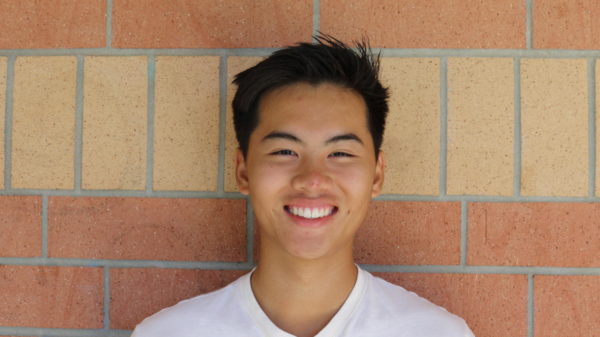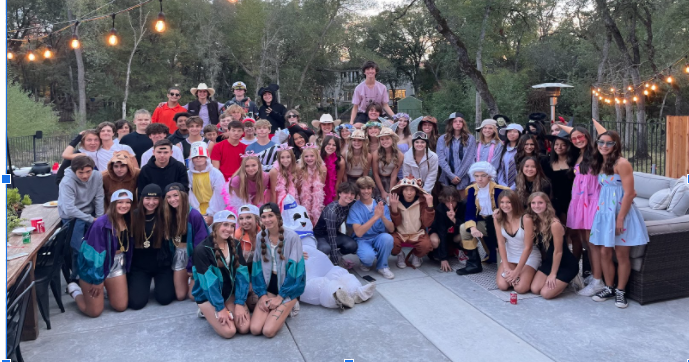From Smarties to Parties: Observing the decline of trick-or-treating
As students grow older, trick-or-treating becomes a thing of the past, replaced by the appeal of parties.
Members of the freshman class at a party on Halloween night. — instead of the usual trick-or-treating
“Trick or treat!”
The beloved national pastime has been rapidly replaced by loud rave music and crowds of people. This is, of course, referring to trick-or-treating and how its once prominence in students is quickly being replaced by parties as those students make their way through high school.
Students at Granite Bay High School, along with high school students in general, are trending away from trick-or-treating and towards partying on Halloween as they move from freshman year toward senior year.
The results of a survey taken by students at GBHS show upperclassmen are trick treating significantly less compared to underclassmen.
The survey participants consisted of eight freshmen, 21 sophomores, eight juniors, and ten seniors. Out of the entire survey, 26 percent preferred to trick-or-treat, 60 percent preferred to party, six percent preferred to do both, and another six percent preferred to stay at home. Of the eight freshmen who took the survey, 25 percent preferred to trick or treat, 50 percent preferred to party, and another 25 percent preferred to do both.
Clearly, parties are beginning to take priority. Students prefer high school parties as they enjoy the crazier type of fun perceived.
“Last year… partying wasn’t as fun, but now parties are more fun than walking around and getting candy,” said freshman Omar Mansour, “There’s candy at parties anyways.”
As students progress their way to becoming seniors, the increased popularity of parties is clear. Of the 10 seniors who took the survey, 20 percent preferred to trick-or-treat, 60 percent preferred to party, ten percent preferred to do both, and another ten percent preferred to stay at home.
Partying does not completely replace trick-or-treating but it seems the longer students are in high school, the more parties they experience and the more they favor this experience on a Halloween night.
“Once you reach a certain point, a lot of people…make the switch,” said senior Paige Beater.
Socially, the switch is also apparent.
There is a clear 50-50 split between feelings on age restrictions and trick or treating.
It is unspoken fact that trick-or-treating is for younger children, and as children move into high school, they should begin to stop trick-or-treating. In a separate survey conducted by Today, 16 percent thought 13-14 was too old for the activity, 20 percent thought 15-16 is too old, 16 percent thought 17-18 is too old while an overwhelming 44 percent thought it is never too late to go trick-or-treating.
“I prefer hanging out now that I’m older, but..I’m not against trick-or treating,” said junior Lee Randolph. “Trick or treating is for all ages.” “ ”
It is also obvious that a friend’s opinion or preference is largely influential on a student’s choice of trick-or-treating or partying.
“I really don’t go to parties very often…I’d only go if my friends are going,” said junior Blake Chandler.
So while most high school students are turning to partying on Halloween as they grow older, there are many that still agree trick-or-treating has no age limit.

Ryan is a senior and Entertainment Editor. This is his third year on the Gazette staff.









